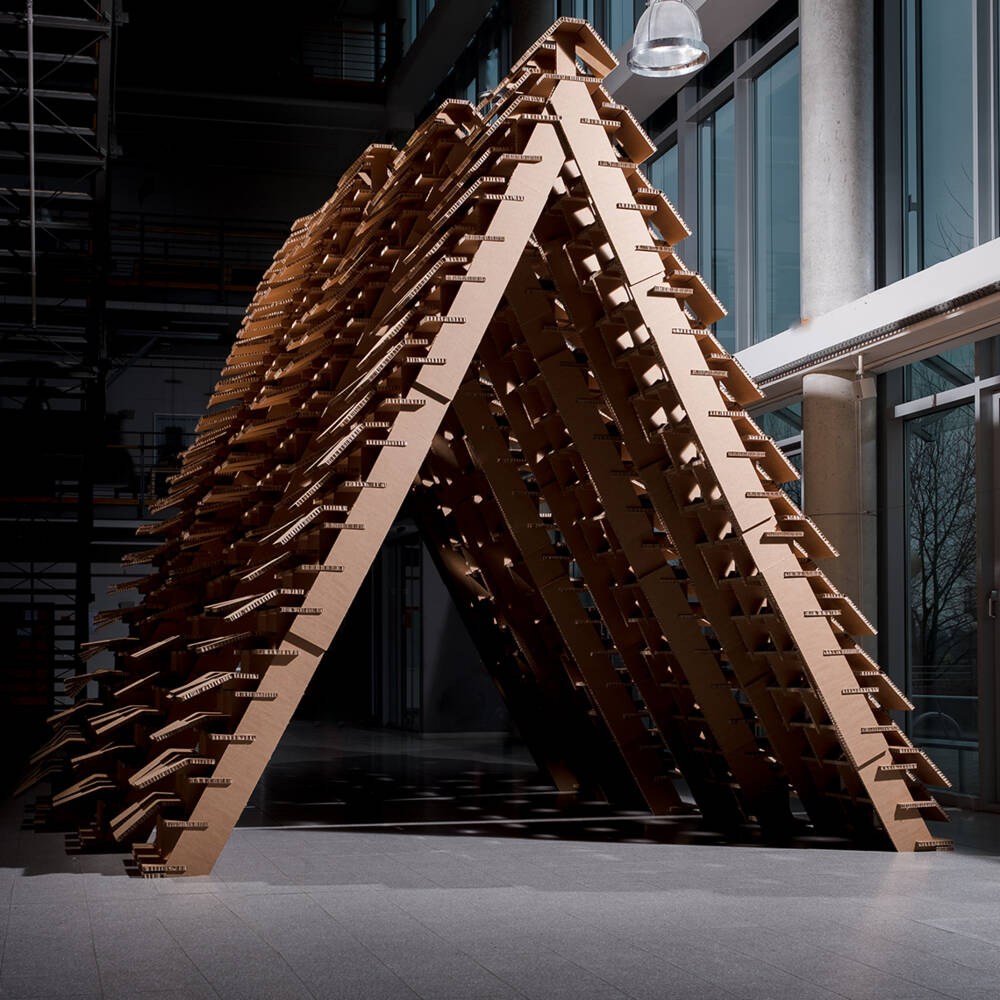
Digital cutting meets architecture
As part of their bachelor thesis, two students from Dortmund University of Applied Sciences & Arts designed and developed a six-meter-long passageway. The structure was produced in an innovative, all-digital manufacturing process chainthat included Zünd digital cutting technology.
The premise for the thesis was participation in the "Mextropoli 2019 Pavilion Competition" in Mexico. This international architectural competition called for the design and construction of a temporary structure that would be erected in the city and meet the requirements for sustainability.
Lukas Kirtz and Karl Rösler`s approach was to combine old with new — traditional construction based on digital design and planning. The passageway they built on a 1:1 scale was covered with shingles attached at minimally different angles. The students` work was supervised by Prof. Dr. Volker Helm, who specializes in digital methods in architecture.
"Using a digital process chain, it is possible to realize complex architecture in a cost-effective and resource-saving manner using automated and nearly waste-free manufacturing methods", explains Prof. Helm.

The material used in the construction of the pavilion was honeycomb board, which is both stable and lightweight. The shingles were cut on a Zünd S3 digital cutting system installed at the university`s department of architecture in fall of 2018. The necessary job data was generated from a parametric 3D model and transmitted directly to the Zünd cutter. The system then proceeded to automatically produce a large number of individual parts that often differed only minimally in size. "Producing a series of unequal parts is made possible only through a digital fabrication process"; says Prof. Helm. In order to specify the exact position of the approximately 2,000 individual pieces that went into building the structure, all parts were identified with a code. Simple plug-in connections allowed for the pavilion to be set up and dismantled within a short time, and for each part to be separated and subsequently recycled.

Media Relations
